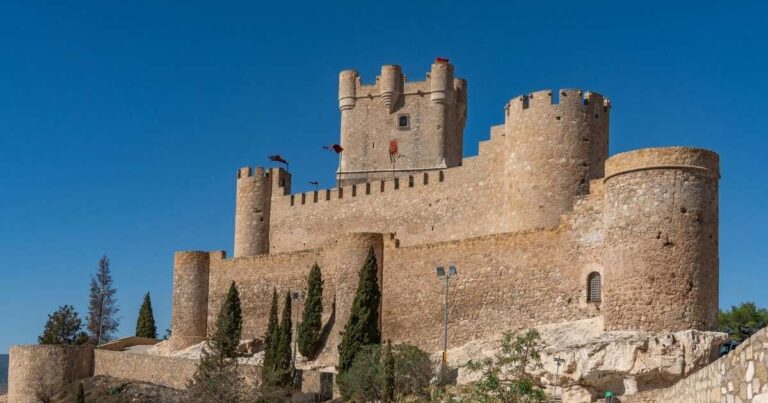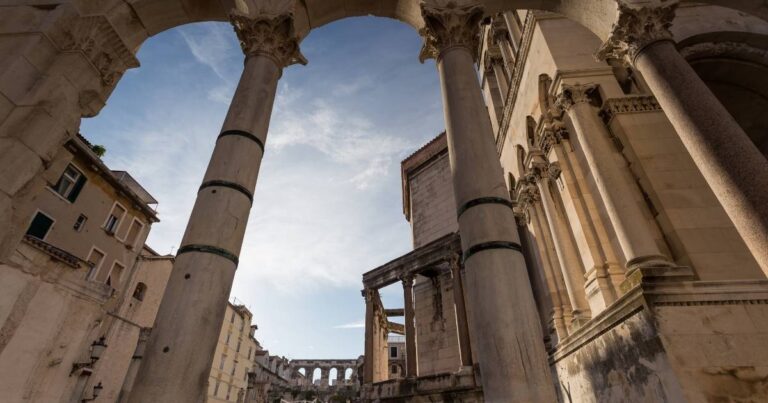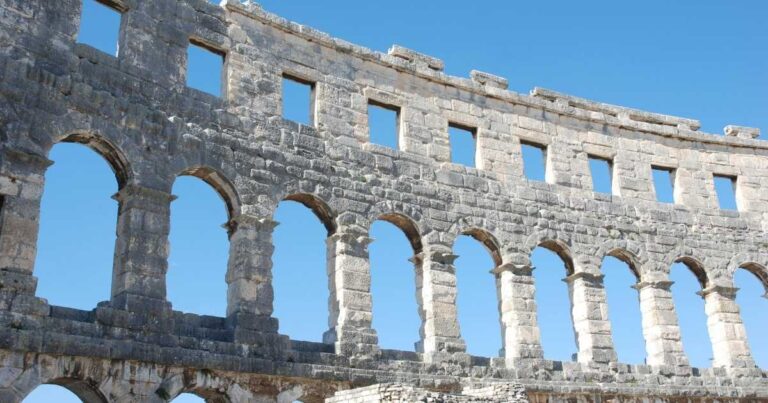Welcome to a journey back in time, to the heart of the Eternal City! This article explores the thrilling and often brutal world of gladiatorial combat in Ancient Rome’s Colosseum. From the rise of Emperors like Commodus, to the captivating lives of Roman gladiators, we will uncover the spectacle, bloodshed, and legacy of Rome’s most famous arena. Prepare to witness the clash of steel, the roar of the crowd, and the drama that unfolded within the Colosseum walls.
The Role of Gladiators in Ancient Rome
Gladiators were far more than just fighters; they were complex figures in the fabric of ancient Rome. Their roles extended beyond mere entertainers, embodying courage, skill, and sometimes, even hope for the enslaved. Understanding the gladiators’ place illuminates the values and contradictions within Roman society, where brutal spectacle met intricate social dynamics. [Insert Internal Link]
Who Were the Gladiators?
Gladiators were primarily slaves, prisoners of war, or condemned criminals, forced into gladiatorial combat as a form of entertainment and punishment. However, some free men, enticed by fame or fortune, also chose to become gladiators. These individuals, regardless of their origins, underwent rigorous training to become skilled fighters, often specializing in particular combat styles. These gladiators appear throughout ancient history.
Types of Gladiators and Their Training
Various types of gladiators existed, each with unique armor, weapons, and fighting styles. The Samnite, the Thracian, and the Retiarius are just a few examples. Training took place in a gladiator school, under the watchful eye of experienced instructors. The gladiators would endure harsh conditions, learning to withstand pain and master the art of gladiatorial combat, preparing them for the arena. The gladiator school can be found throughout the Roman empire.
Life and Death in the Arena
For a gladiator, life was a constant struggle for survival. While some achieved fame and even freedom, many faced an early and violent death in the arena. The spectacle of gladiatorial games was a central part of Roman culture, captivating audiences with its blend of skill, courage, and mortal danger. The Colosseum became the ultimate stage for these dramatic confrontations, marking life and death.
Emperor Commodus: The Gladiator Emperor
Emperor Commodus stands as one of Rome’s most controversial rulers. His reign marked a turning point in the Roman Empire’s history. Unlike his predecessors, Commodus embraced a persona that blurred the lines between emperor and gladiator, leaving a lasting impact on Roman society and politics. Commodus’s rule, marked by extravagance and erratic behavior, challenged the traditional image of a Roman emperor.
Rise to Power of Emperor Commodus
Commodus ascended to the throne upon the death of his father, Marcus Aurelius, in 180 AD. This marked the end of the era of the “Five Good Emperors” and the beginning of a period of instability. Commodus inherited a vast empire but lacked the wisdom and military prowess of his father. His leadership quickly deviated from the principles of the Roman empire.
Commodus’ Participation in Gladiatorial Fights
Commodus was infamous for his obsession with gladiatorial fights. He frequently participated in combat himself, often against disabled or poorly armed opponents. While he saw himself as a skilled warrior, his actions were widely seen as scandalous and unbecoming of a Roman emperor. Dio described how Emperor Commodus fought as a gladiator, highlighting the shock this caused. [External Link to Dio’s Roman History]
Impact on Roman Society and Politics
Commodus’s behavior had a profound impact on Roman society and politics. His obsession with gladiatorial combat alienated the Roman elite and undermined the authority of the imperial office. His actions contributed to a growing sense of instability and paved the way for the turbulent years that followed. Many people of Rome disagreed with the Roman emperor.
Famous Gladiators of the Colosseum
Spartacus: The Rebel Gladiator
Spartacus led a massive slave revolt against the Roman Republic. Spartacus, a name synonymous with defiance, stands as one of the most famous gladiators in ancient history. Enslaved and trained in the art of gladiatorial combat, Spartacus led a massive slave revolt against the Roman Republic. His rebellion, fueled by the desire for freedom, shook the foundations of Rome and demonstrated the potential power of the oppressed. The gladiator challenged the Roman empire.
Spiculus: The Favorite Gladiator of Commodus
Spiculus gained notoriety as a favorite of Emperor Commodus. Spiculus, a celebrated gladiator, gained notoriety as a favorite of Emperor Commodus. His prowess in the arena earned him wealth and fame, highlighting the complex relationship between emperors and gladiators. Spiculus’s story reflects the opportunities and dangers that came with being a successful gladiator in the Roman world, especially under the patronage of a volatile ruler like Commodus. The gladiator can be found in Roman history.
Geta: The Lesser-Known Gladiator
Geta, though a lesser-known figure compared to Spartacus or Spiculus, offers a glimpse into the broader spectrum of gladiatorial combat. While historical records about Geta are scarce, his presence in the arena reflects the thousands of gladiators who fought and died for the amusement of the Roman people. His story, though fragmented, contributes to our understanding of the Roman games. Gladiators would have had all sorts of backgrounds.
The Colosseum: An Architectural Marvel
Design and Construction of the Colosseum
The Colosseum is an architectural marvel of the Roman Empire. The Colosseum, also known as the Flavian Amphitheatre, stands as an architectural marvel of the Roman Empire. Emperor Titus inaugurated the Colosseum in 80 AD. Its innovative design, incorporating arches, vaults, and concrete, allowed it to accommodate tens of thousands of spectators. The Colosseum’s construction showcased Roman engineering skills and the empire’s ability to organize massive projects. The Roman emperor would watch gladiatorial combat here.
The Role of the Colosseum in Ancient Rome
The Colosseum played a central role in the social and political life of ancient Rome. The Colosseum played a central role in the social and political life of ancient Rome. It hosted gladiatorial games, public executions, and other spectacles that entertained and controlled the populace. The arena served as a stage for emperors to display their power and generosity, solidifying their rule through entertainment. The spectacle of the Colosseum was integral to the Roman empire.
Events Beyond Gladiatorial Fights
While gladiatorial fights were the Colosseum’s most famous attraction, other events also took place within its walls. The Colosseum hosted many different kinds of shows, for example:
- Animal hunts (venationes)
- Mock sea battles (naumachiae)
- Public executions
These diverse events catered to a wide range of tastes, ensuring the Colosseum remained a popular destination for people of Rome. The Colosseum hosted many events involving wild beasts.
Mad Emperors and Their Influence on Gladiatorial Games
Understanding the Term ‘Mad Emperors’
The term “Mad Emperors” refers to Roman rulers whose behavior was considered erratic, cruel, or simply out of touch with reality. These emperors often exhibited behaviors that challenged the norms of Roman society, impacting various aspects of Roman life, including gladiatorial games. Their actions frequently led to instability and unrest within the Roman Empire. Nero’s actions caused him to be viewed as a “mad emperor.”
Notable Examples of Mad Emperors and Their Actions
Caligula and Nero are prime examples of “Mad Emperors” who significantly influenced Roman society. Caligula was known for his extravagance and unpredictable behavior. Nero was known for his cruelty and alleged role in the Great Fire of Rome. Their actions, though extreme, highlight the potential impact of a ruler’s personality on the Roman Empire. These rulers of the Roman empire left an impact on ancient history.
The Legacy of Tyranny in the Arena
“Mad Emperors” used gladiatorial games to display their power and control. The “Mad Emperors” often used gladiatorial games as a means to display their power and control. They would stage elaborate and often brutal spectacles, pushing the boundaries of what was considered acceptable. The arena became a stage for their tyranny, reflecting their disregard for human life and their obsession with power. Many gladiators appear in historical accounts of these times, facing these emperors.
Historical Insights and Current Trends
Modern Interpretations of Gladiatorial Combat
Modern interpretations of gladiatorial combat often explore the social, political, and economic factors that shaped this ancient spectacle. Scholars like Futrell and Wiedemann delve into the motivations of gladiators and the audiences who watched them. These analyses challenge traditional views, offering new insights into the values and contradictions of ancient Rome. Understanding the power dynamics of the Roman empire is important.
Tourism and the Colosseum Today
The Colosseum is a major tourist attraction. The Colosseum stands as a major tourist attraction, drawing millions of visitors each year to ancient Rome. Tourists come to see the arena. The ongoing efforts preserve the Colosseum and showcase its historical significance. Tourism helps to fuel interest in Roman history and gladiatorial combat, ensuring the legacy of the Roman gladiators. People of Rome benefit from the tourism industry in the Eternal City.
Future of Gladiatorial Studies and Public Interest
The future of gladiatorial studies looks promising, with new archaeological discoveries and scholarly research constantly emerging, adding to what we know about ancient history. Public interest in gladiatorial combat remains high, fueled by movies, books, and documentaries. As gladiatorial games continue to capture our imaginations, the legacy of gladiators in the Roman empire and the Colosseum will endure for generations to come. The Roman emperor is someone that will always be studied.
Conclusion and Key Takeaways
Recap of Gladiators and Emperors in the Colosseum
In ancient Rome’s Colosseum, gladiators and emperors played pivotal roles in shaping the spectacle of gladiatorial combat. Emperors like Commodus influenced the games. Famous gladiators like Spartacus defied the Roman empire, as highlighted by Dio and Futrell. The Colosseum, an architectural marvel, hosted events that continue to fascinate and captivate audiences today, and its legacy endures. The spectacles that the gladiators took part in are incredible.
Final Thoughts on Their Lasting Legacy
The legacy of gladiators and emperors in the Colosseum endures as a testament to the complexities of ancient Rome. The legacy of gladiators and emperors in the Colosseum endures as a testament to the complexities of ancient Rome. From the bloodshed in the arena to the political machinations of the emperors, their stories offer valuable insights into human nature and the dynamics of power. As we remember their courage and brutality, we are reminded of the timeless themes of freedom, oppression, and the enduring human spirit. The Roman empire was an important part of ancient history.
FAQs about Gladiators and the Colosseum
What was the role of gladiators in society?
Gladiators were complex figures in ancient Rome, fulfilling a variety of roles. They were:
- Entertainers, captivating audiences with their skills and bravery.
- Symbols of courage, embodying the values admired within Roman society.
- Political tools, sometimes used to sway public opinion or demonstrate power.
Their combats reflected the values and contradictions of ancient Rome, influencing popular culture and social dynamics within the Roman empire. Gladiators appear throughout ancient history.
Did Emperor Commodus really fight as a gladiator?
Yes, Emperor Commodus participated in gladiatorial fights. Yes, Emperor Commodus was infamous for participating in gladiatorial fights. While he saw himself as a skilled warrior, his actions were viewed as scandalous by the Roman elite. Commodus’s obsession with gladiatorial combat reflected his erratic behavior and contributed to the instability of his reign. People of Rome did not agree with the Roman emperor.
Who were some of the most famous gladiators?
Spartacus and Spiculus are two of the most famous gladiators. Besides Spartacus, famous gladiators include Spiculus, a favorite of Emperor Commodus, and Geta, whose story reflects the lives of countless lesser-known fighters. Spartacus challenged the Roman republic. The Roman gladiators each had their own backgrounds. These individuals left their mark on ancient history and continue to be remembered for their skill and courage in the arena, showcasing the brutality of the Roman empire.
What types of events took place in the Colosseum?
The Colosseum was a versatile venue, hosting a wide array of spectacles. Beyond the well-known gladiatorial fights, it also featured a number of other popular events, such as:
- Animal hunts
- Mock sea battles
- Public executions
These diverse events, often attended by the Roman emperor, contributed to the Colosseum’s popularity and its role as a central gathering place in the Eternal City.
How did mad emperors affect gladiatorial games?
“Mad emperors” used games to display their power and cruelty. “Mad emperors” often used gladiatorial games to display their power and cruelty, staging extravagant and brutal spectacles. Their actions pushed the boundaries of what was considered acceptable and undermined the authority of the Roman elite. Nero’s actions are an example of this. The arena became a stage for their tyranny, reflecting their disregard for human life, and they left a mark on ancient history.







